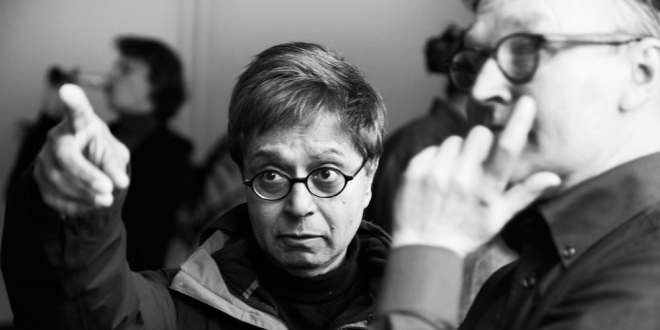MALMÖ: It was with Professor Sarat Maharaj’s encouragement – and memory – that Malmo Art Academy’s “Teaching Studio” room was changed into a replica of another classroom, many years and kilometers away.
Professor Maharaj, along with five of his students, has been working since early October to turn the former studio room into a replica of the South African University College for Indians’ art history room. The room was recently completed, and was inaugurated on January 31st with a gathering and a lecture by Professor Maharaj.
The University College for Indians’ art history room has special significance to Professor Maharaj: he studied there in the late 60’s, during South Africa’s apartheid era of racial segregation. Maharaj., who is of Indian descent, attended the segregated University College for Indians. This spring, he’ll be leading his own course in his own reproduction art history room, a course entitled The World Turned Upside Down: art and ethics in the rise of the Stone Age South.
The course description explains that the original art history room’s apartheid-influenced purpose was to show an “evolutionary ladder” of artifacts; to illustrate how some cultures’ artwork was superior to other cultures’.
Maharaj hopes the reborn art history room will raise counter-readings, and throw light on “today’s world of the migratory mix of peoples and cultural elements — on prickly issues of multiculturalism, its limits and shortcomings, on questions of learning to live with diversity and multiplicity… ”
The Durban Art History Room was recreated in spirit, if not in complete accuracy.
“A perfect replica would have been impossible”, Maharaj says, because all he and his students had to go one were his memories from nearly 60 years ago and one picture, a photocopy of a photocopy of a photograph – “an image of an image of an image,” as Maharaj describes it. The picture is in black-and-white and is slightly blurry, and shows a corner of the classroom with a blackboard, a window, and a desk with a few sculptures arranged on it.
Maharaj remembers the sculptures as Greco-Roman, but the photograph is too hazy to make out any detail. The dedicated team of student re-constructionists were unfazed; not only did they re-create the sculptures, but they re-created their blurriness, too, making the sculptures in indistinct and silhouette-like shapes.
Joakim Sandqvist and Max Ockborn, two of the students involved in the re-construction, both said that building the room was fun and interesting, but that it also took a lot of work. Some of the pieces of furniture, such as the desk, were hand-built, while others were picked up from thrift stores or IKEA. One rug was delivered from South Africa.
“The students put an optimistic gloss on the room. This is world culture on display; what do we do with it?” says Maharaj.






